Remember that all our blog posts are hand-made by real locals, trying to help tourists and people living in Italy enjoy the most of everything
So, you’re planning a trip in the capital of South Italy? If you’re looking for hidden gems, from a local perspective, keep reading
We will provide you an extensive list of hidden gems to discover in Naples, be it places, experiences, foods or whatever this amazing city has to offer to the tourist that want to walk off the beaten path
Fiocco di Neve, Poppella

Hot outside and cold inside, the Fiocco di Neve (Snowflake) was invented by Poppella, an historic pastry shop in the heart of Naples, in the Sanità district.
It has been created quite recently, especially if compared to classic neapolitan sweets like sfogliatella, but has entered by right in the olympus of the typycal neapolitan sweets. So much that now everyone sells it.
But remember, the original was created by Poppella
Monte Echia

Up on the ancient Echia Hill, where the first greeks settlers landed more than 2500 years ago and started to build the ancient Parthenope
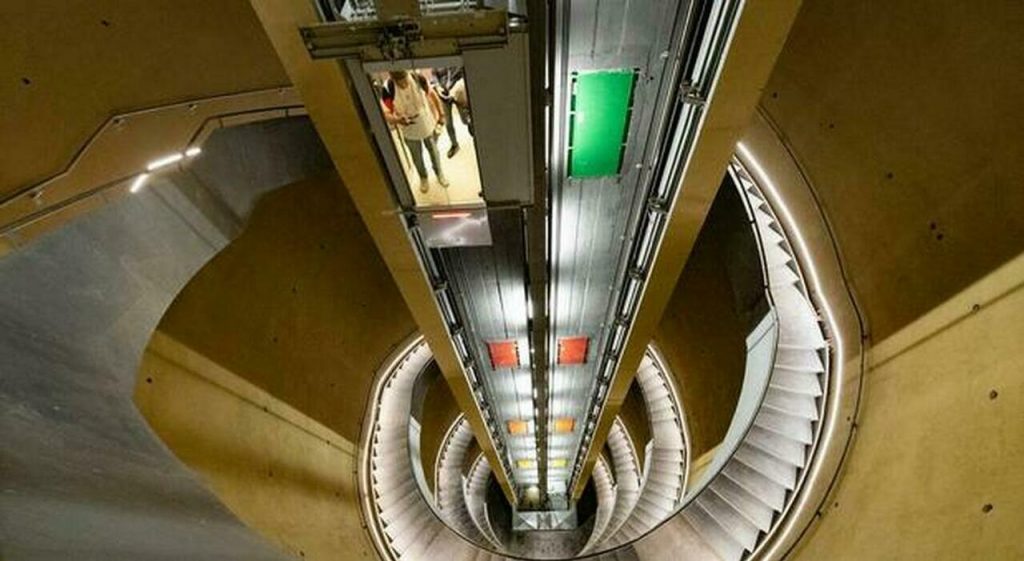
On top of the hill, easily reachable with a modern elevator, you will have the chance to enjoy one of the most beautivul views of the gulf, with the Vesuvius dominating .
It is easily reachable from the seaside district, Chiaia and just recently the metro line 6 that easily connects Chiaia with the rest of the city
The Fontanelle Cemetery: Naples’ Hidden Gothic Marvel
Tucked away in the Sanità district of Naples, the Fontanelle Cemetery (Cimitero delle Fontanelle) stands as one of the city’s most haunting yet fascinating historical sites.
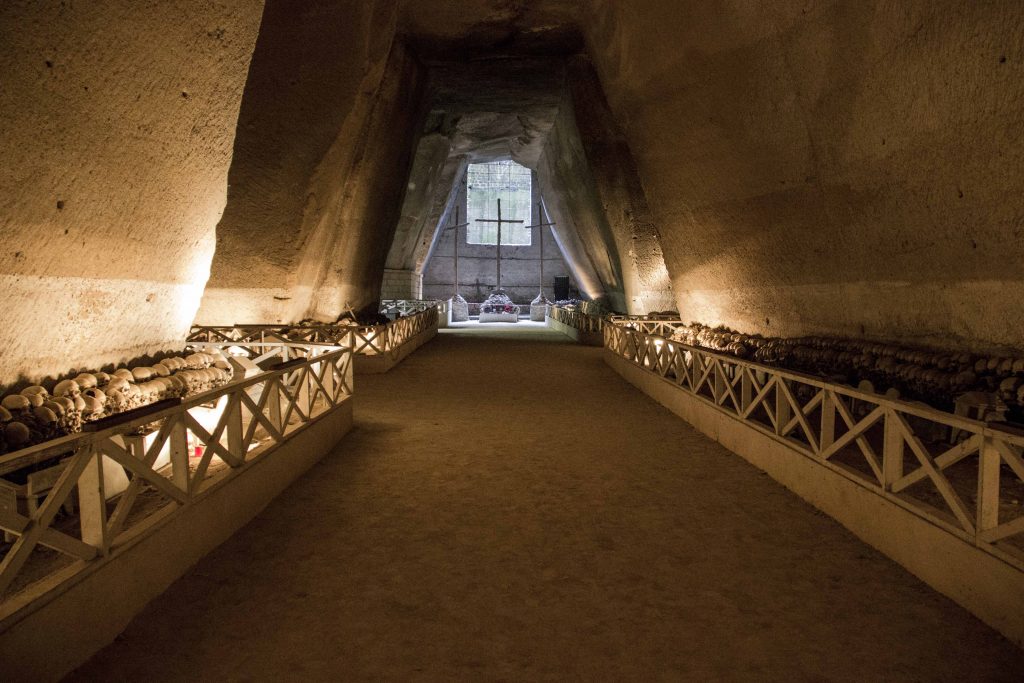
This vast ossuary, housed within an ancient tufa stone quarry, contains the remains of thousands of Neapolitans, primarily victims of the 1656 plague epidemic and the cholera outbreak of 1837. The cemetery gained its peculiar arrangement in the late 19th century when remains from churches across Naples were transferred here due to overcrowding.
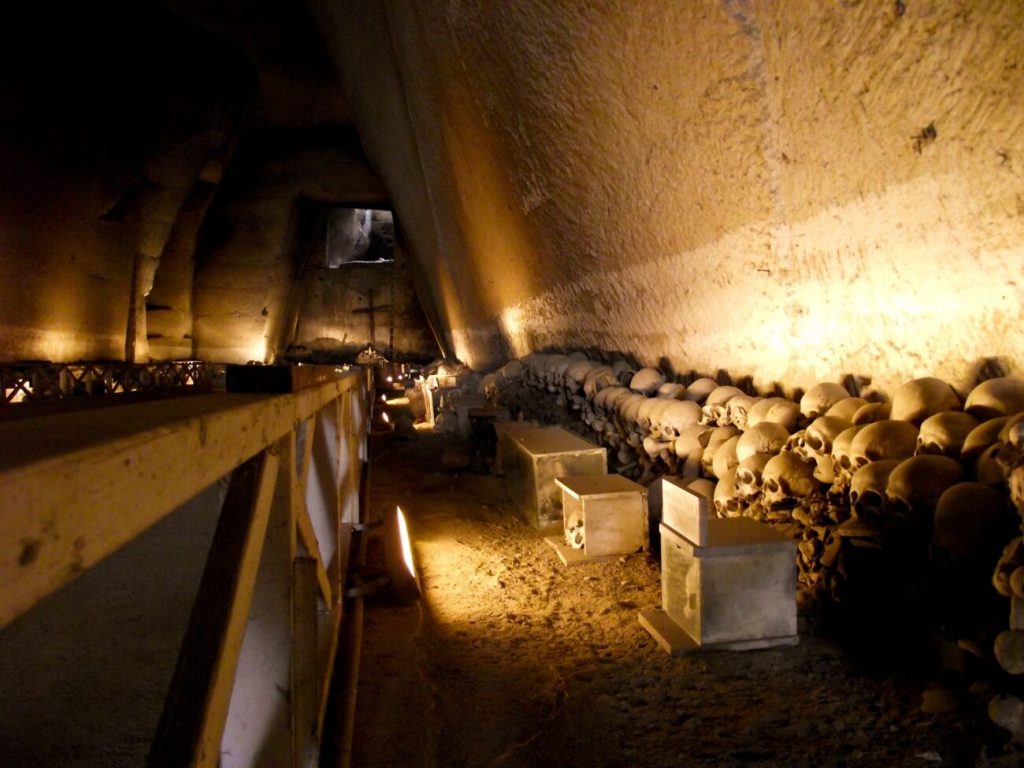
What makes Fontanelle truly unique is the “cult of the dead” that developed around it, where locals would “adopt” skulls (called “anime pezzentelle” or “poor souls”), caring for them in exchange for protection and favors. This practice was eventually prohibited by the Catholic Church in 1969.
Today, visitors can wander through the cavernous chambers filled with carefully arranged bones and skulls, experiencing a profound connection to Neapolitan folk traditions and the city’s complex relationship with death and the afterlife.
Piazza Bellini: Naples’ Bohemian Heart
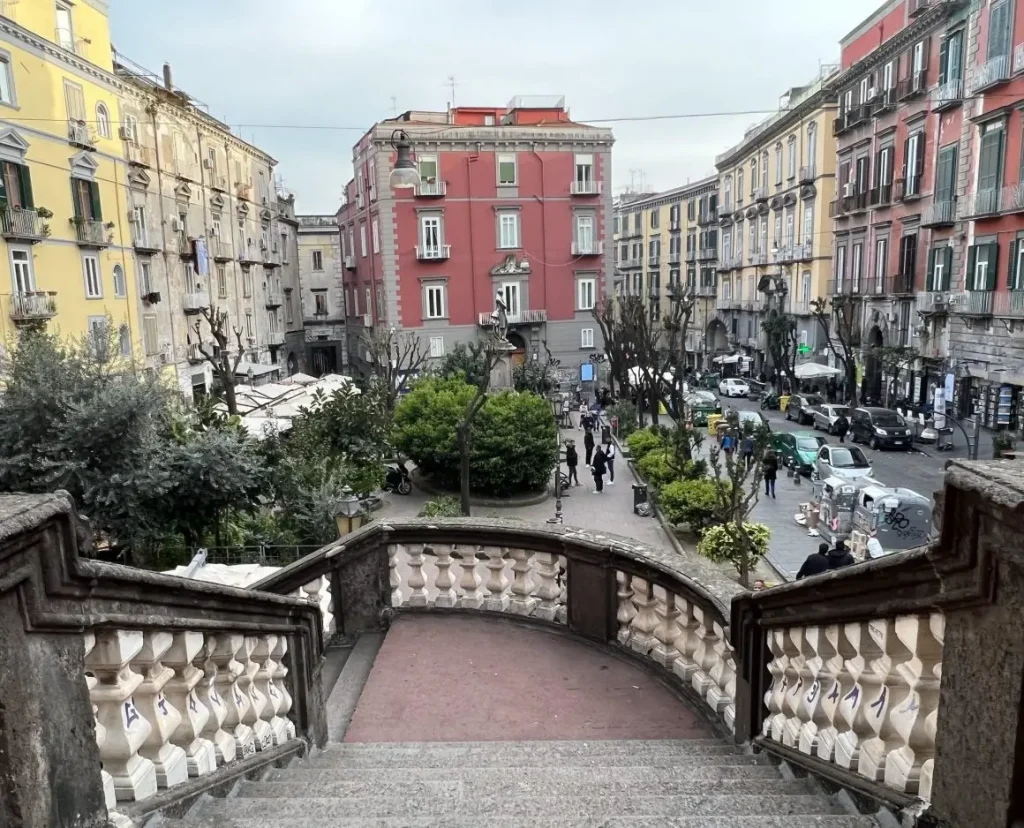
If you’re looking for weed in Naples, this is what you’re looking for
Nestled in the historic center of Naples near the Archaeological Museum, Piazza Bellini stands as one of the city’s most vibrant cultural hubs. This charming square, built atop ancient Greek city walls partially visible in its center, has evolved into the unofficial gathering place for artists, students, and intellectuals. By day, visitors can enjoy coffee at outdoor cafés while admiring the 16th-century palazzo that houses the Naples Conservatory of Music. As evening falls, the piazza transforms into a lively social scene with bars and restaurants spilling onto the cobblestones, creating an atmosphere of youthful energy and cultural exchange.
While Piazza Bellini is celebrated for its bohemian character and intellectual history, it has also gained notoriety for its open consumption of drugs, where cannabis of questionable quality is discreetly sold in small quantities despite its illegality—a testament to the complex social fabric and somewhat relaxed enforcement that characterizes parts of Naples.
If you’re looking for GOOD quality weed in Naples, here’s what you’re looking for
This duality makes the piazza both an authentic cultural experience and a reminder of the city’s sometimes complicated relationship with formal regulations.
The Cloister of Santa Chiara: Naples’ Hidden Ceramic Paradise
Nestled within the Monastery of Santa Chiara in the heart of Naples, the Majolica Cloister (Chiostro di Santa Chiara) stands as one of the city’s most enchanting yet often overlooked treasures. Constructed in the 14th century and dramatically redesigned in the 18th century by Domenico Antonio Vaccaro, this peaceful sanctuary features vibrant hand-painted majolica tiles depicting rural scenes, mythological figures, and daily life in Naples.
The colorful ceramic pillars and benches that line the garden walkways create a mesmerizing geometric pattern, with each tile contributing to a larger artistic narrative.
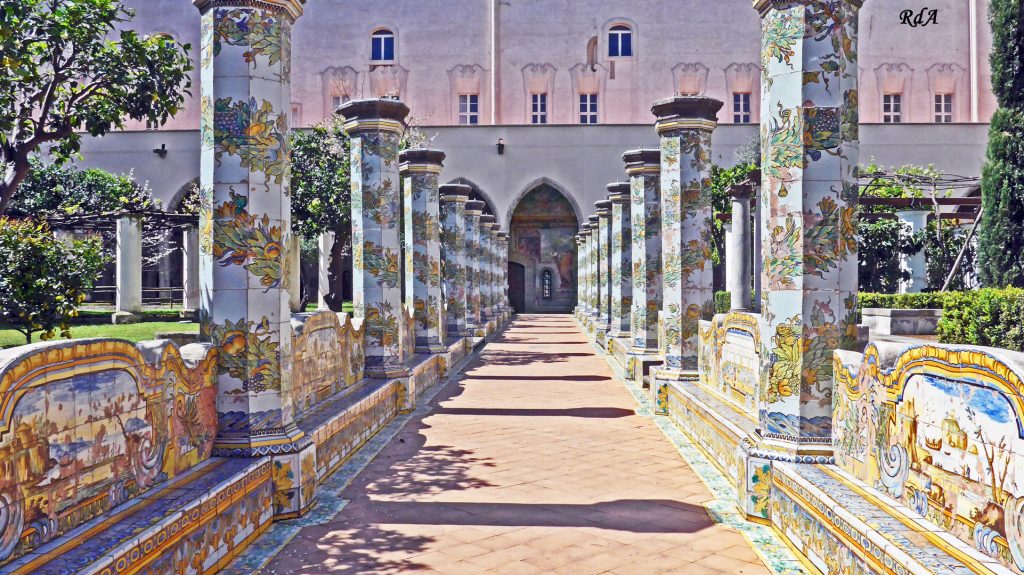
During World War II, the monastery suffered significant bombing damage, but the cloister was meticulously restored to preserve its cultural significance. Today, visitors can stroll through this serene garden oasis, admiring not only the extraordinary tilework but also the lush orange and lemon trees that provide shade and fragrance throughout the courtyard. The cloister offers a tranquil retreat from the bustling city streets and a glimpse into Naples’ rich artistic heritage.
Parco Virgiliano: Naples’ Panoramic Haven on the Posillipo Hill
Perched dramatically atop the Posillipo Hill on Naples’ western edge, Parco Virgiliano (also known as Parco della Rimembranza) offers visitors one of the most breathtaking panoramic views in the entire Mediterranean.
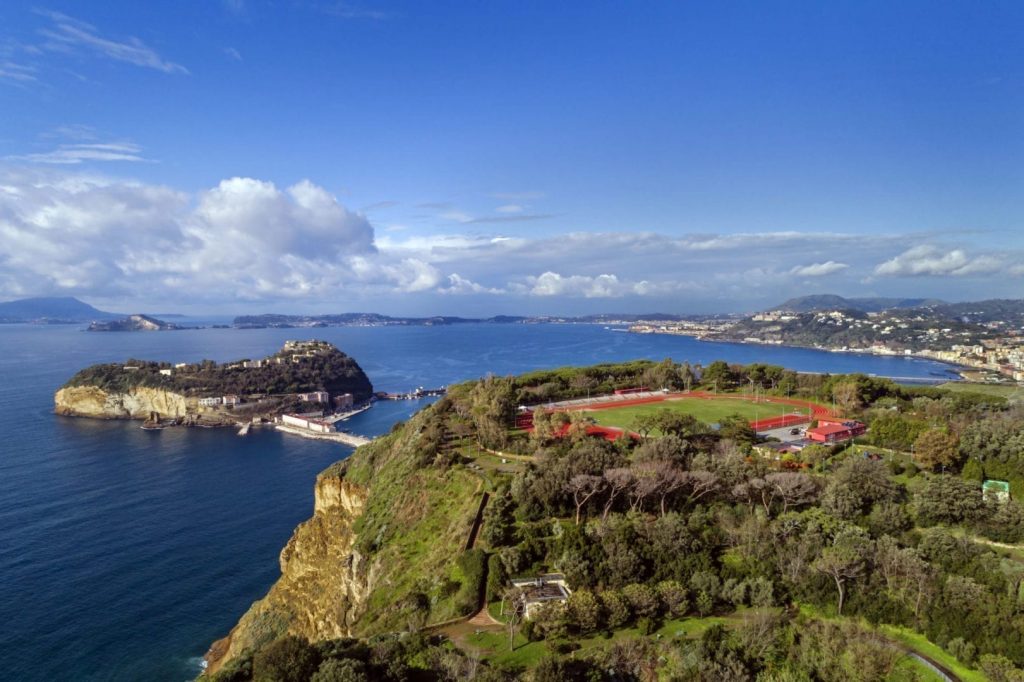
Created in the 1930s and named after the Roman poet Virgil who is said to have lived nearby, this terraced park serves as a green sanctuary away from the city’s vibrant chaos. The park’s strategic position presents unrivaled vistas spanning from the Bay of Naples and Mount Vesuvius to the islands of Capri, Ischia, and Procida, with the Sorrento Peninsula stretching into the distance. Throughout the grounds, ancient Roman artifacts and commemorative monuments honor those who fell during World War I, giving the park its alternative name, “Park of Remembrance.” Stone pathways wind through pine groves and flowering gardens, offering numerous lookout points where visitors can pause to absorb the spectacular seascape.
Particularly magical at sunset, Parco Virgiliano provides both locals and tourists a peaceful retreat where Naples’ natural beauty unfolds in its full, breathtaking glory.

Eremo dei Camaldoli: Naples’ Serene Hilltop Sanctuary
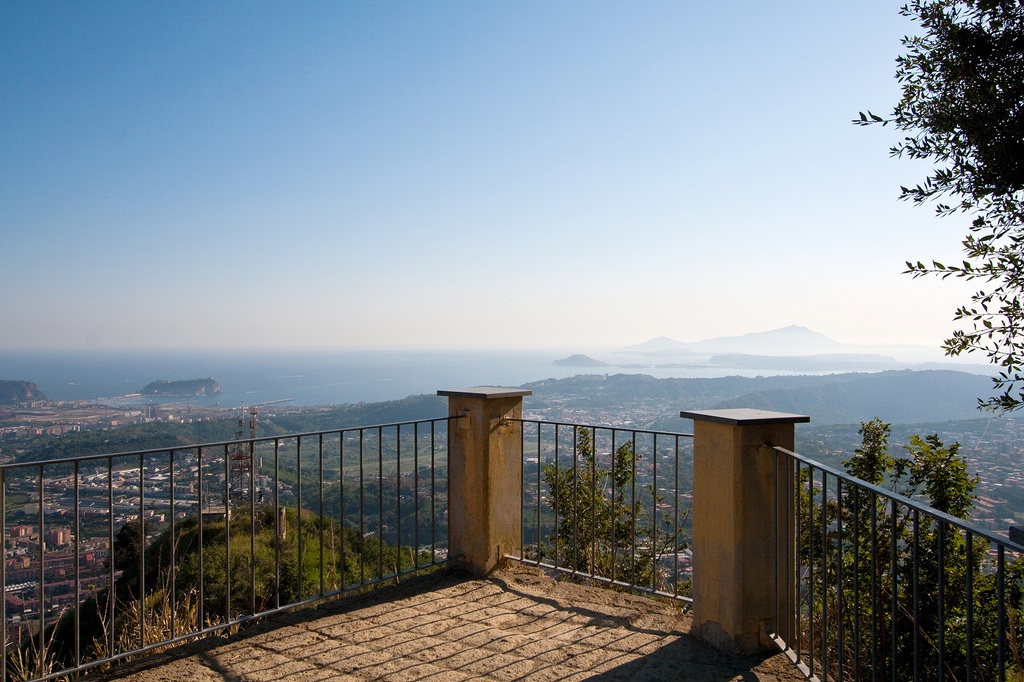
Crowning the highest point of Naples at 458 meters above sea level, the Eremo dei Camaldoli offers perhaps the most spectacular 360-degree panorama of the entire city and its surroundings. Founded in 1585 by the Camaldolese monks, this historic hermitage continues to serve as a functioning monastery where a small community of monks maintains their centuries-old tradition of contemplative life. While not easily accessible by public transportation, requiring either a car journey or a somewhat challenging hike up the hill, the reward is undoubtedly worth the effort. Visitors who make the journey discover what is arguably the most peaceful corner of Naples, a tranquil oasis far removed from the city’s characteristic hustle and bustle.
From its privileged vantage point, the hermitage presents breathtaking views that encompass the entire Gulf of Naples, Mount Vesuvius, the islands of Capri and Ischia, the Sorrento Peninsula, and on particularly clear days, even glimpses of the mountains of Calabria in the distance. The site includes a historic church, beautiful gardens, and cloisters that transport visitors to a realm of serenity and spiritual reflection rarely found in this vibrant Mediterranean metropolis.
The surrounding Bosco dei Camaldoli, Naples’ second-largest green space, has unfortunately spent more than a decade largely in a state of neglect and disrepair.
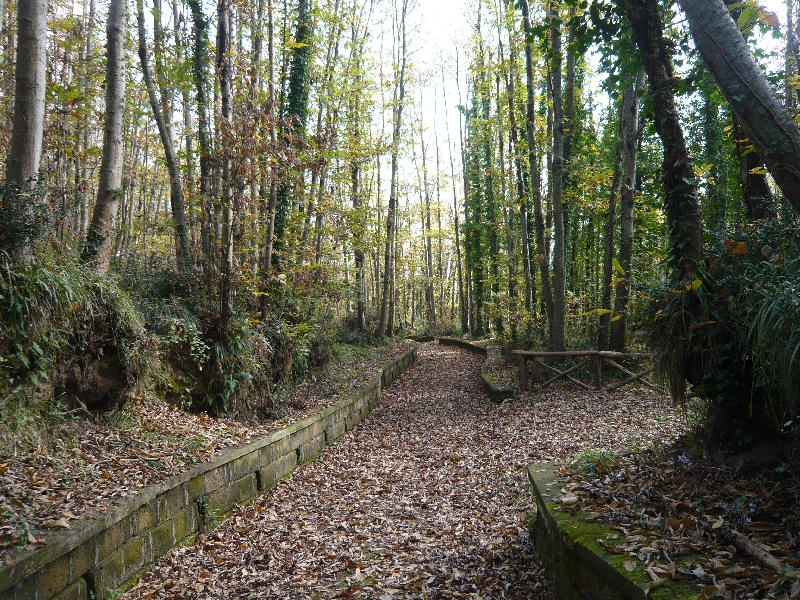
This once-magnificent woodland, which should serve as a vital “green lung” for the city, fell victim to years of administrative indifference. Fortunately, the area has recently returned to political attention, with numerous restoration projects now approved and underway. At the time of writing this article, weeding and clearing operations are actively taking place throughout the forest to make it fully enjoyable for visitors once again. As part of this revitalization effort, the area has been officially renamed “Parco delle Colline di Napoli” (Naples Hills Park), signaling a renewed commitment to preserving this precious natural resource for future generations.

Join Our Naples Insider Community
Get real-time advice, exclusive locations & connect with locals on Telegram

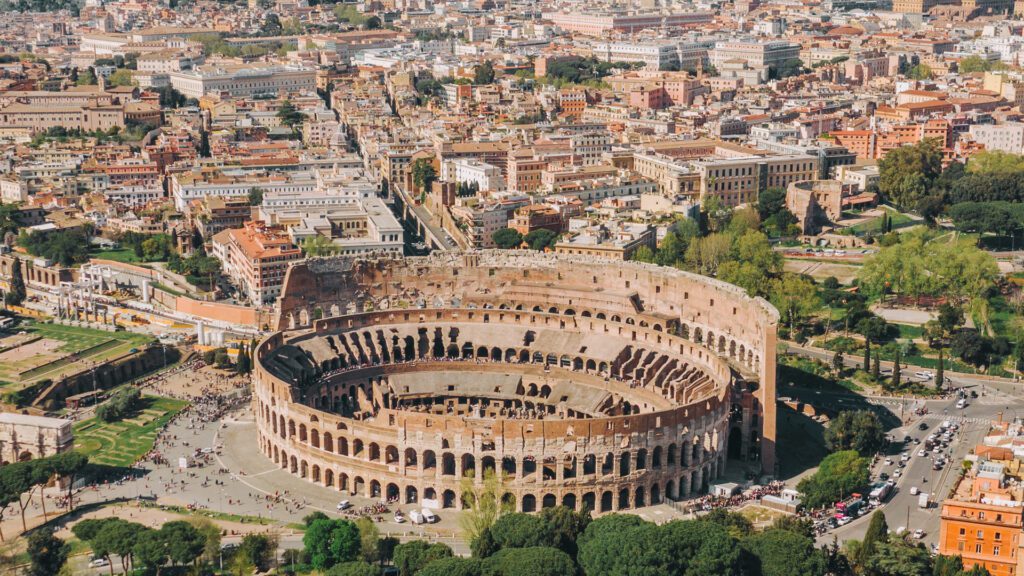


Leave a Reply